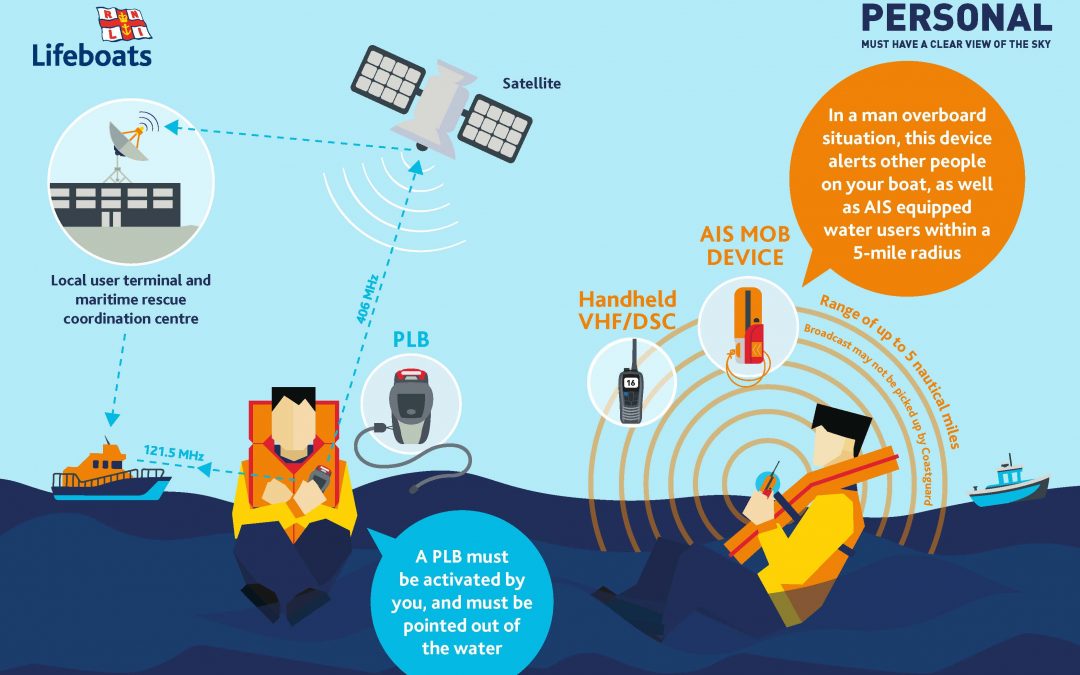Frankie Horne
RNLI Fishing Safety Manager
Fishermen all over the UK and Ireland have an unwritten rule to help each other in times of need or distress. They tend only to call for help from others as a last resort. I am sure this will continue for years to come. However, when a situation is becoming life threatening, or is likely to escalate to life threatening, a call must be made early. As someone who has served in the RNLI as a lifeboat crew/coxswain, I’m sure I speak for all in the rescue services by saying I would rather be there 10 mins early as 10 mins late.
Interestingly, the RNLI analysis data of commercial fishing fatalities between 2008 and 2017 shows that most “Calls for Help” came from phones, rather than VHF/DSC radio or even EPIRB/PLB.
However, not all situations allow for someone to make that essential call for help. For example, if a lone working fisherman were to fall overboard, without a means of calling for help on his person. In this instance, it could be hours before the alarm is raised and a search and rescue operation for the person and vessel gets underway. Such time delays typically increase the search area and often reduces the likelihood of a successful outcome.
During any search and rescue mission, there is more likely to be a successful outcome if the “call for help” is initiated immediately. The first informant’s information is vital for HMCG (UK) and ICG (IRE) to deploy the appropriate SAR assets. i.e. Lifeboats/Helicopters and any other vessels able to assist with the search and rescue.
Location, time, the nature of incident, persons on-board, if the rescue assets have these vital bits of information, it is invaluable to the rescue and can greatly impact the outcome. When they do not, it’s then down to a process of elimination to narrow down the possibilities of where and when the incident happened. From my previous experience as a Lifeboat crew/coxswain this can be a long process, and sometimes a best guess scenario.
A Quick Summary of Calling for Help Devices.
Fixed VHF/DSC Radio. Very High Frequency / Digital Selective Calling – This is the preferred communication to the Coastguard. A DSC distress alert is a recognised emergency signal and it also transmits your position. Send a DSC alert followed by a voice call on VHF Channel 16 communicating the distress message to all vessels and shore stations in range. This means all are aware of your situation and can respond even before the rescue mission has been initiated.
EPIRB. Emergency Position Indicating Radio Beacon – This system is to indicate that a vessel has an Emergency and requires assistance. It can be float-free and automatically or manually activated. With worldwide coverage EPIRBs give rescue services a Time, Position and Vessel Identification, the position is regularly updated when activated. It is fitted with a flashing light and transmits a homing signal for Direction Finding fitted vessels. It is most important to make sure this equipment is registered on the EPIRB Registry with the Coastguard.
PLB. (Personal Locator Beacon) A recognised emergency signal with worldwide coverage. PLBs are manually activated, so the owner should make themselves fully aware of how to use and maintain the PLB. It should be kept on your person and in a position where it is easily accessible to be held out of the water to activate if not already attached to your Lifejacket. PLBs should be registered with HMGG/ICG with the correct details to aid in rescue coordination.
AIS/MOB Automatic Identification System Man Overboard Device. Communicates by electronically exchanging data with AIS Receivers on vessels and base stations. In a man overboard situation this device automatically alerts all AIS Receivers within range which is 5nm or less dependent on antenna height and obstacles. Although not GMDSS approved some vessels with several crew onboard or working 80nm to 100nm offshore (where rescue will be a long time coming) are now using AIS/MOB Devices attached to their PFD’S so they can track a man overboard and effect a rescue themselves where possible.
Pyrotechnics (Flares) These are a visual indicator that assistance is required. Parachute Rocket Flares can be seen for up to 28nm in good visibility. Red Paras, Handheld flares and Buoyant Smoke markers are perfect for calling for help provided someone can see them. For instance, if you are fishing in an area where there is a lot of activity and you lose all your electrics or drifting close to shore any one of these will alert someone to your situation. Please remember that all out of date pyrotechnics (flares) should be disposed of correctly.
Safe Fishing


Recent Comments